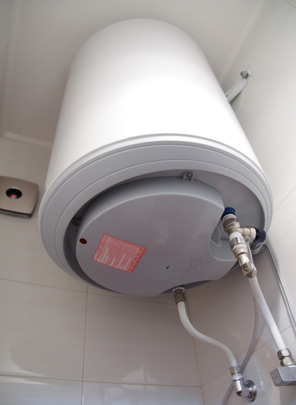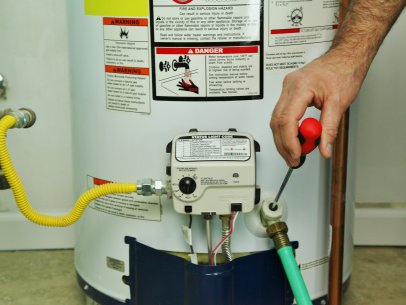Just about every person maintains their personal opinion on the subject of How to Maintain a Hot Water Heater in a Few Simple Steps.

Hot water is important for daily convenience, whether it's for a rejuvenating shower or cleaning dishes. To guarantee your hot water system runs efficiently and lasts much longer, regular maintenance is essential. This short article supplies useful tips and insights on exactly how to keep your home's warm water system to prevent interruptions and costly repair work.
Intro
Preserving your home's hot water system might appear complicated, but with a couple of easy actions, you can ensure it operates efficiently for years ahead. This guide covers every little thing from comprehending your hot water system to DIY upkeep ideas and knowing when to call expert aid.
Significance of Keeping Your Hot Water System
Normal maintenance not just extends the life-span of your hot water system yet also guarantees it operates efficiently. Overlooking upkeep can lead to reduced performance, greater energy expenses, and also premature failure of the system.
Indications Your Warm Water System Needs Maintenance
Understanding when your warm water system requires attention can stop significant issues. Look out for indications such as irregular water temperature level, unusual noises from the heating system, or corroded water.
Understanding Your Hot Water System
Before diving right into upkeep jobs, it's helpful to comprehend the fundamental parts of your warm water system. Typically, this includes the water heater itself, pipes, anode poles, and temperature level controls.
Month-to-month Upkeep Tasks
Normal monthly checks can aid capture small issues prior to they escalate.
Flushing the Hot Water Heater
Flushing your water heater removes sediment buildup, enhancing effectiveness and prolonging its life.
Checking and Replacing Anode Rods
Anode rods stop rust inside the container. Evaluating and changing them when worn out is essential.
Examining and Changing Temperature Settings
Changing the temperature settings ensures optimal performance and safety.
Do It Yourself Tips for Upkeep
You can execute numerous upkeep jobs on your own to maintain your hot water system in top condition.
Checking for Leakages
Consistently evaluate pipelines and links for leakages, as these can result in water damage and higher costs.
Examining Stress Alleviation Valves
Evaluating the pressure relief valve guarantees it works appropriately and protects against extreme pressure buildup.
Shielding Pipelines
Protecting hot water pipelines decreases heat loss and can save power.
When to Call an Expert
While DIY maintenance is valuable, some issues call for professional expertise.
Facility Problems Requiring Specialist Help
Examples include significant leaks, electrical troubles, or if your hot water heater is continually underperforming.
Regular Expert Upkeep Perks
Professional upkeep can include extensive evaluations, tune-ups, and ensuring conformity with safety criteria.
Final thought
Regular upkeep of your home's warm water system is necessary for effectiveness, long life, and expense financial savings. By complying with these tips and understanding when to seek expert help, you can make sure a reputable supply of warm water without unforeseen disturbances.
How to Maintain an Instant Hot Water Heater
Before tinkering with your hot water heater, make sure that it’s not powered on. You also have to turn off the main circuit breaker and shut off the main gas line to prevent accidents. Also turn off the water valves connected to your unit to prevent water from flowing into and out of the appliance. 2. When you’re done, you have to detach the purge valves’ caps. These look like the letter “T†and are situated on either side of the water valves. Doing so will release any pressure that has accumulated inside the valves while at the same time avoid hot water from shooting out and burning your skin. 3. When the purge valves’ caps are removed, you have to connect your hosing lines to the valves. Your unit should have come with three hoses but if it didn’t, you can purchase these things from any hardware or home repair shops. You can also get them from retail stores that sell water heating systems. Read the user’s manual and follow it to complete this task properly. When the hosing lines are connected, open the purge port’s valves. 4. You should never use harsh chemical cleaners or solutions when cleaning your unit. Make use of white vinegar instead. It should be undiluted and you’ll probably use about 2 gallons. 5. Now flush your water heater. This task should probably take about 40 minutes. We can’t give you specific directions for this because the procedure is carried out depending on the type, model and brand of your heater. With that being said, refer to the user’s manual. 6. When you’re done draining the unit, you have to turn off the purge port valves again. Remove the hosing lines that you earlier installed on each of the water valves. Put the valve caps (purge port) back in their respective places and be very careful so as not to damage the rubber discs that are found inside these caps. 7. Now that everything’s back in place, check your user’s manual again to find out how to reactivate your water heating system. 8. Once it is working, turn one of your hot water faucets on just to let air pass through the heater’s water supply pipes. Leave the tap on until water flows smoothly out of it. https://www.orrplumbing.com/blog/2014/september/how-to-maintain-an-instant-hot-water-heater/

I'm very intrigued by How to Maintain Your Water Heater & Prolong its Life and I hope you liked the piece. Enjoyed our write-up? Please share it. Help somebody else check it out. Thanks so much for your time spent reading it.
Book Appointment